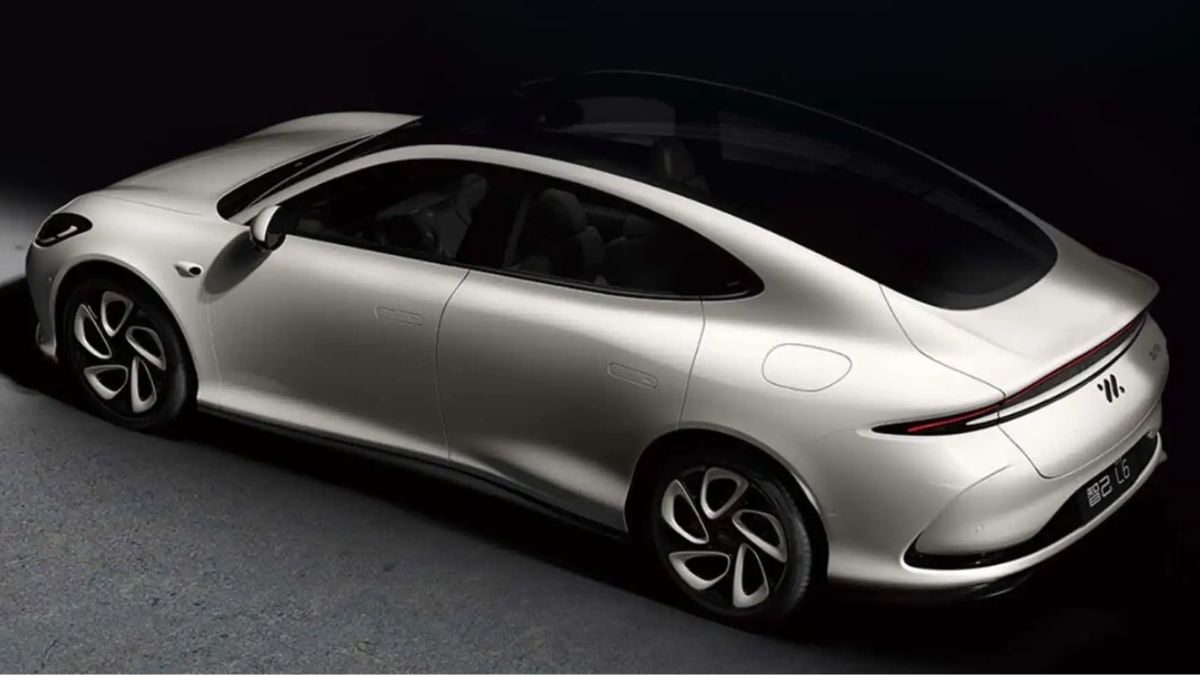The Financial Times sad down with CATL's Robin Zeng after his customary midday nap to discuss the future of solid-state batteries in electric vehicles. Zeng enthusiastically spoke about his ambition to push CATL into everything from power transmission to energy generation through the recyclable solar cells the group is developing, and talked about three main reasons why the solid-state batteries in electric cars are years away.
Toyota touts its progress in solid-state battery development, aiming for production by 2027. However, China's leading battery manufacturer, headed by a skeptical Ph.D. physicist, casts doubt on Toyota's claims of achieving near-future commercialization.
“We fully support solid-state, but I have been investing in this for 10 years,” Zeng told FT. He also added that he watches the development people working on solid-state almost every month, and thus, knows all the progress. Yet, somehow they still have these three showstoppers.
What is a solid-state battery's big advantage over a lithium-ion battery?
The big advantage of solid-state batteries is that solid-state batteries over traditional lithium-ion batteries is the key benefit that lies in their improved safety. Unlike lithium-ion batteries that use a flammable liquid electrolyte, solid-state batteries employ a solid electrolyte, typically ceramic or polymer-based. This solid construction eliminates the risk of fires or explosions that can occur with liquid electrolytes if damaged or overheated.
However, the biggest leap forward with solid-state batteries comes with the possibility of using entirely new battery chemistry. This new approach would involve using pure lithium metal for the anode electrode. While this offers a significant boost in energy density – meaning a single charge could take an EV much further – there are substantial hurdles to overcome. Here is the key challenge: lithium ions can move freely within the liquid electrolytes of lithium-ion batteries, but this diffusion process becomes much more difficult with solid electrolytes. Scientists are actively researching ways to address this and other limitations to unlock the full potential of solid-state batteries.
The 1st problem of solid-state commercialization is about bringing the new chemistry to market.
While solid-state batteries offer exciting possibilities, a major obstacle stands in the way of their widespread adoption. Unlike traditional lithium-ion batteries that use a liquid electrolyte for easy ion movement, solid-state batteries rely on solid materials. This creates a significant challenge – lithium ions have difficulty diffusing through these solid electrolytes.
This limited diffusion directly impacts the potential benefits of solid-state batteries. One key advantage would be using pure lithium metal for the anode, which offers a much higher energy density than traditional anodes. However, the sluggish movement of lithium ions within the solid electrolyte hinders this new chemistry from reaching its full potential.
Note that CATL's engineers have attempted to overcome this by applying high pressure during testing, which temporarily improves ion transfer. The real issue lies in maintaining that pressure in a practical, commercially viable battery design. Creating a battery that can withstand the immense pressure needed for optimal performance remains a significant hurdle.
The 2nd problem with the solid-state battery commercialization is the expansion of lithium during charging.
Beyond the limitations caused by sluggish ion movement, solid-state batteries face another major hurdle: the instability of lithium metal anodes. Traditional lithium-ion batteries use graphite anodes, which expand and contract minimally during charging and discharging. However, lithium metal anodes are far more reactive. As Zeng explains to FT ithium metal tends to expand significantly during electric vehicle's charging and discharging process. This drastic change in size damages the solid electrolyte separator, compromising the battery's integrity. The consequence? A dramatically reduced lifespan of solid-state battery – the battery might only last for a handful of charging cycles before failing.
This limited reusability makes solid-state batteries, in their current state, completely impractical for electric vehicles, which require batteries that can withstand hundreds or even thousands of charging cycles.
The 3rd problem with solid-state battery commercialization is the safety issue
The challenges facing solid-state batteries extend beyond performance limitations. Safety also remains a concern.
As Zeng points out, even with the supposed safety benefits of a solid electrolyte, there's a potential downside. If a solid-state battery ruptures in an accident, for example, the exposed lithium metal can react with moisture in the air. This reaction can generate heat and potentially lead to a fire, highlighting the need for further advancements in material design to fully mitigate safety risks associated with solid-state batteries.
Note that this is coming from a person, whose team has been pushing the limits of solid-state batteries in the past 10 years and his company is a major Tesla battery supplier.
Are there any cars already using solid-state batteries?
On the other hand, a few days ago on March 24, SAIC IM Auto officially announced the industry's first solid-state battery: IM Motors Zhiji L6.

While hurdles remain in the development of solid-state batteries, SAIC IM Auto is making a bold move. They've announced that their upcoming Zhiji L6 electric car will be equipped with the industry's first ultra-fast charging solid-state battery. This innovative technology offers an impressive range exceeding 1,000 kilometers, along with 900V ultra-fast charging capabilities. Additionally, the battery pack is designed to be L0 thermal runaway-free, significantly enhancing safety.
Industry's first solid-state battery!#SAIC IM Auto officially announced that the upcoming IM L6 will be equipped with ultra-fast charging solid-state batteries, providing 1000+km range, 900V ultra-fast charging, and L0 thermal runaway-free pack. pic.twitter.com/sfbQBzkVYy
— ThinkerCar (@thinkercar) March 25, 2024
Are there any electric vehicles in the American market using solid-state batteries?
John Goreham, Torque News electric vehicle expert and former engineer says, "There are many promising battery technologies to look forward to. No automaker is using solid-state batteries in any EV in the American market yet, but this is one technology that seems likely to make it to production soon." Goreham also notes that "While Toyota, in particular, is very conservative about its previews and predictions, it has been keeping industry experts up to date on its progress regularly."
If battery experts can solve the above-mentioned three problems related to solid-state batteries, we can say that solid-state batteries in electric cars will be better than lithium-ion batteries.
Solid-state batteries have the potential to be a major improvement over lithium-ion batteries. They offer two key advantages: firstly, their higher energy density could significantly extend the range of electric vehicles and lengthen the charge life of portable devices. Secondly, the solid electrolyte eliminates the flammable liquids used in lithium-ion batteries, leading to a much safer design with a reduced risk of fires or explosions.
I’d love to hear from you! If you have any comments, concerns, or questions about solid-state batteries. Please reply in the comments section below.
Armen Hareyan is the founder and the Editor in Chief of Torque News. He founded TorqueNews.com in 2010, which since then has been publishing expert news and analysis about the automotive industry. He can be reached at Torque News Twitter, Facebook, Linkedin, and Youtube. He has more than a decade of expertise in the automotive industry with a special interest in Tesla and electric vehicles.





